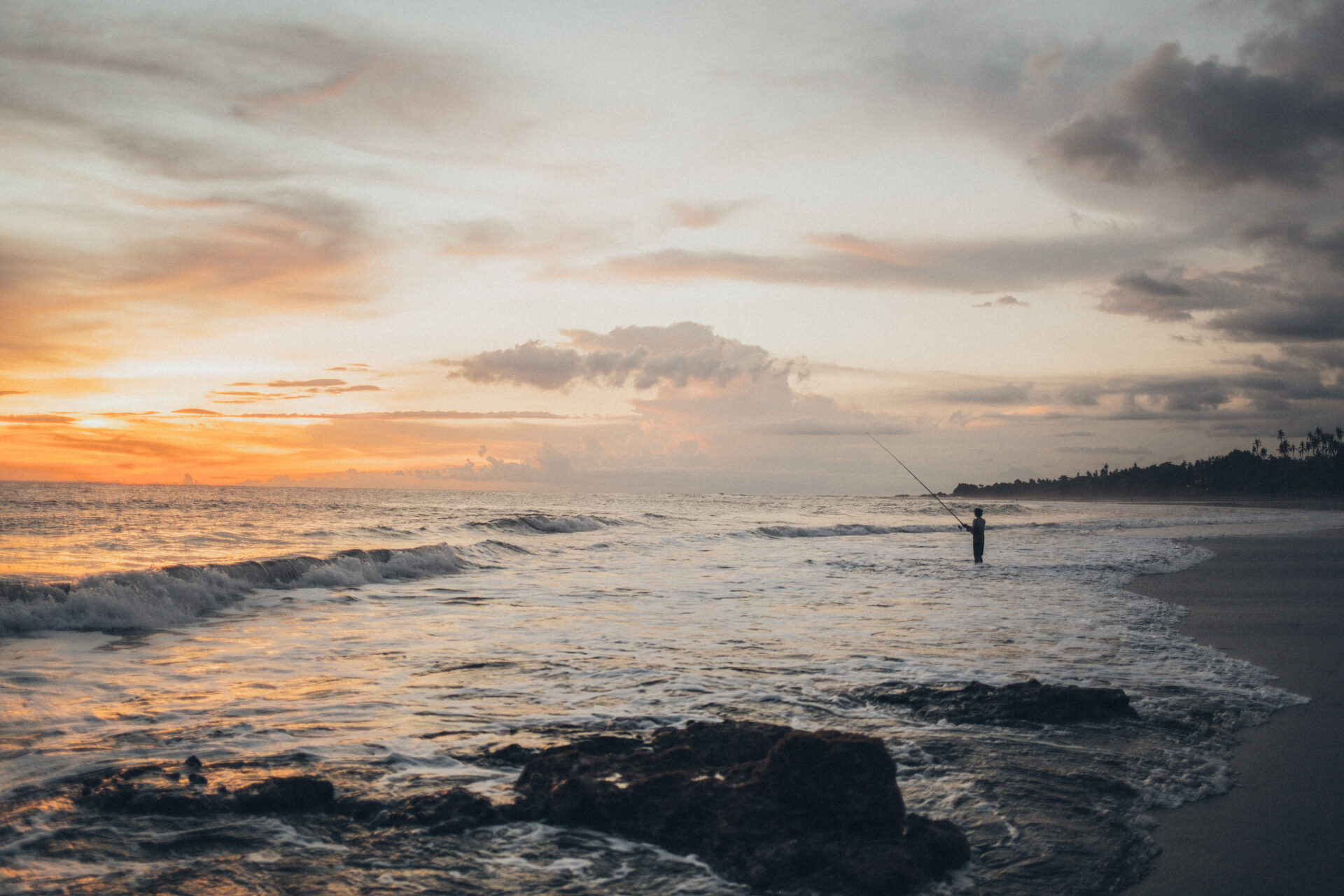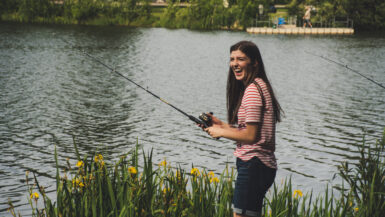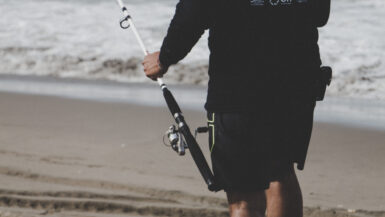If you’re an avid bass fisherman, you know that shallow water is a great place to catch some of the biggest bass. With the right know-how and the right lures, you can easily bring in a great catch. In this article, we’ll be providing 5 tips for catching big bass in shallow water that you should use the next time you go out on the lake.
Understanding Shallow Water
Fishing in shallow water can be a great way to catch big bass and is a technique used by many fishermen. Knowing the ideal conditions and techniques for catching bass in shallow water can help you to up your game and land a big haul. Here are 5 tips for catching big bass in shallow water that can help you get more success in your fishing trips.
1. Choose the Right Time of Day to Fish
The best time to fish for bass in shallow water is in the early morning or late afternoon. Bass tend to be the most active during this time because the water temperature is cooler and they are able to feed more efficiently. Additionally, bass tend to be more alert during these times so they are more likely to be looking for prey.
2. Understand the Basics of Structure
Understanding the basics of structure is key when fishing in shallow water. Bass are most likely to be found near weedbeds, submerged logs, rocks, or other areas of structure in shallow water. Being able to identify these areas can help you to locate the bass more easily.
3. Don’t Be Afraid to Change It Up
When fishing in shallow water, it can be easy to fall into a pattern and forget to switch things up. To increase your chances of catching big bass, be sure to change your techniques up often. Try different lure types, depths, and speeds to give the bass something new to look at.
4. Work the Entire Water Column
When fishing in shallow water, it’s important to remember that the bass can be found in various depths of the water column. Instead of targeting one specific depth, be sure to work the entire column from the bottom up. This will help you to locate the bass and increase your chances of success.
5. Pay Attention to Your Gear Choice
The type of tackle you choose can also make a big difference when fishing in shallow water. Using a heavy-action rod with a strong line can help you to get more control when working your lure. Additionally, using smaller lures or soft plastics can help you to target the bass more effectively in the shallow water.
By following these tips and understanding the basics of shallow water fishing, you can up your game and increase your chances of success when fishing for big bass. Be sure to take the time to understand the conditions, structure, and gear needed to give yourself the best chance at catching big bass in shallow water.
Choosing the Right Gear
When fishing for big bass in shallow water, the right equipment is essential for success. To maximize your chances of landing a trophy fish, you must choose the right gear for your specific fishing conditions. Here are five tips for selecting the right equipment for the job:
Using the Right Rod
A good quality rod is essential when choosing the right gear for fishing in shallow water. For bass fishing, a medium-heavy spinning rod is recommended; it should be long enough so you can have a reasonable casting distance, and it should be stiff enough to handle large fish. When picking a reel, look for one that is built for durability and smooth operation.
Picking the Right Line
An important factor in choosing the right gear for successful shallow water bass fishing is the line. Generally speaking, you should use a line that is strong enough to handle large fish, yet still light enough to cast without too much trouble. Fluorocarbon and monofilament lines both work well for this type of fishing; fluorocarbon has the advantage of being almost invisible to the fish, while monofilament is cheaper and easier to handle.
Choosing the Right Lure
When picking the right lure for catching big bass in shallow water, think about what type of bait the bass will be attracted to. Crankbaits, topwater poppers, and spinnerbaits are all good choices, as are worms and jigs. Experiment and see which type of lure is most successful in your particular circumstances.
Attracting the Fish: Baits and Scents
In addition to choosing the right lure, you may also want to use a natural bait to attract the fish. Live worms, minnows, or other baitfish can be effective when used in combination with a lure. Also, don’t forget to use scents and attractants to bring the fish in.
Setting the Hook
When fishing in shallow water, a fast and powerful hook set is essential to landing that trophy bass. Make sure to use a good, sturdy hook that won’t bend out with a large fish. Set the hook firmly and quickly, and reel the fish in without hesitation.
By following these five tips for choosing the right gear for catching big bass in shallow water, you can maximize your chances of success. Not only will this help you increase your catch rate, but it will also ensure that you have the right equipment to handle those trophy-sized bass.
Master the Strike
Shallow water is a great place to target large bass. A shallow water bass may be looking for an easy meal, so it is important to understand the habits and preferences of these big fish. It is important to know where to look for them, when to look for them, and what lure to use to catch them. Knowing these things can help you catch more big bass in shallow water.
Use the Right Lure
When targeting big bass in shallow water, it is important to choose the right bait. When the water is shallow, the bass will be much more visible and therefore more easily spooked by a large bait. Using smaller, more subtle lures like soft plastics, crankbaits and spinnerbaits can be very effective for catching big bass in shallow water. These lures are more likely to draw the attention of these big fish, and the smaller profile will help avoid scaring them away.
Be Stealthy
When fishing for big bass in shallow water, it is important to move as stealthily as possible. Even the slightest sound can spook large bass in shallow water, so it is important to keep your movements to a minimum and to keep away from noisy objects like trolling motors or shoreline vegetation. If you are fishing from a boat, try to stay as far away from the shore as possible and motor slowly to avoid making too much noise.
Fish During the Right Time
When targetting big bass in shallow water, it is important to know when they are most active. Early morning and late evening are usually the best times to target big bass in shallow water, as they will be looking for an easy meal after a night of rest. Bass will also be more likely to move into shallower water in the warmer months of summer, so it is important to keep this in mind when fishing for big bass in shallow water.
Follow the Strike
When you feel a bite on your line, you should set the hook immediately and follow the fish. Following the strike will help you land larger bass, as they will often put up a strong fight and you need to be able to keep track of them in order to successfully land them. Using a rod with a soft tip and a good drag system can help you successfully follow the strike and land the big bass.
Use the Wind to Your Advantage
In shallow water, natural currents can be a great help for catching big bass. These currents can cause baitfish to congregate in certain areas, making them easier to spot and catch. When looking for natural currents, pay attention to water levels and water temperature. If the water is rising or falling, look for areas where the water velocity might be higher. Additionally, warmer water currents tend to be more active and attract more baitfish, so target these areas when possible.
Choose the Right Lure
When fishing in shallow water, it’s important to choose the right lure. Using a light lure will help you keep your bait in the strike zone longer and make it easier to feel bites. Plugs and spinner baits are usually a good choice as they can be retrieved quickly, allowing you to cover more ground and find more fish. If a particular lure isn’t working, don’t be afraid to switch things up and try something different.
Stay Mobile
When fishing in shallow water, it’s important to stay mobile. Rather than sticking to one spot, try to cover as much ground as possible. This strategy will help you locate active fish and find areas where the bass might be feeding. It also gives you the opportunity to experiment with different techniques and lures to find out what works best.
Pay Attention to Structure
When looking for big bass in shallow water, it’s important to pay attention to structure such as weeds, grass, rocks, or logs. These areas can provide shelter for bass and can also attract prey, making them prime spots for fishing. Target these areas, but be careful when casting to avoid snagging your lure.
Be Strategic with the Wind
Wind can be a great asset when fishing in shallow water. If the wind is blowing in a particular direction, it can create current and attract baitfish, making it easier to spot and catch bass. Pay attention to the wind direction and use it to your advantage by positioning your boat accordingly. This can help you cover more ground and find active fish.
Vary Your Trolling Patterns
Trolling for bass in shallow waters can be tricky, as the fish tend to be more skittish and may not respond to the same lures or techniques as they would in deeper waters. To increase your chances of hooking a big catch, try changing the speed of your trolling and mixing up your techniques. For example, you could try trolling with a small crankbait at a faster speed, or switch to a slow trolling technique with a larger, more realistic-looking artificial lure. Additionally, vary the depth and direction of your trolling, as well as your bait selection, to explore different parts of the water and uncover a bass’s favorite hiding spot.
Know When to Change Direction
When trolling for bass in shallow waters, it is important to pay attention to the depth of the water. If you are trolling in water that is less than 10 feet deep, the bass may not be interested in your bait or technique. If you don’t get any bites, try changing the direction of your troll and heading back towards deeper waters. You might also consider fishing in somewhat deeper waters and then transitioning to shallower waters as the tide changes. Reversing your trolling direction can often be the key to success when fishing in shallow waters.
Try Different Lures and Bait
When trolling for big bass in shallow waters, it’s important to experiment with different lures and bait. Soft plastic lures, like worms and grubs, can be effective for catching bass in shallow waters. Suspending lures, like crankbaits, can also work well if they are fished close to the surface. If the bass seem to be lethargic, try using a heavier lure or bait. Alternatively, you could try using a bright bait or a lively artificial lure, such as a darting crankbait or a topwater plug. Experimenting with different lures and bait will often increase your chances of hooking a big bass.
Stay Stealthy
As you troll for bass in shallow waters, be sure to remain as stealthy as possible. Bass in shallow waters are easily spooked, so you’ll need to move slowly and quietly. Try to keep your trolling motor low and your lure close to the bottom. Additionally, pay attention to the noise and commotion you create while trolling. If the water is choppy, the commotion you create could scare away nearby bass.
Use Photo Graphs to Find the Best Spots
Using a fish finder in shallow waters can be a great way to locate bass. Photo graphs are especially helpful when trolling for bass in shallow waters, as they provide a detailed look at the bottom of the lake. By examining a photo graph, you can see which areas contain submerged stumps and weed beds, which are often hotspots for bass. Additionally, examining a photo graph can help you identify changes in the lake bottom, so you can avoid areas that may be too shallow or rocky for effective trolling.
Tips for Making the Most of Your Fishing Trip
Catching big bass in shallow water can be a tricky but rewarding task. Though bass can be found in deep lakes and rivers, they may also be closer to the surface than you think. To make the most of your next fishing trip, consider these five tips: (1) search for baitfish; (2) research the environment; (3) use light tackle; (4) use a slow presentation; and (5) work the edges. Regardless of the method, be sure to observe the regulations for the body of water you’re fishing in and be patient – big bass can take patience and dedication to land. With these tips in mind, you’re sure to have a successful and enjoyable fishing trip and hopefully, you’ll have a big bass story to tell in the end.





Leave a reply